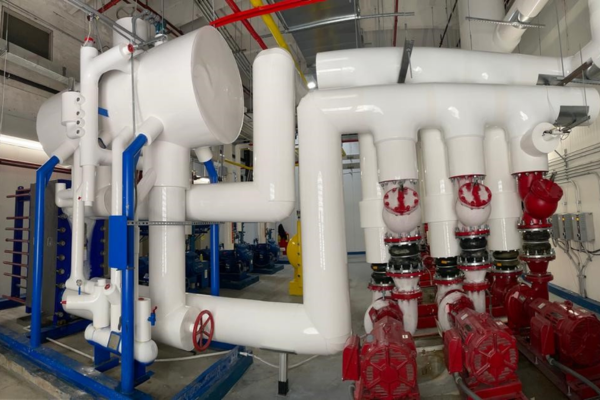Accurate cost estimation is the bedrock of successful mechanical projects. Whether you're installing HVAC systems, plumbing networks, fire protection, or process piping, having precision in your budget and timeline predictions is essential. This is where mechanical estimating services step in—to simplify the estimating process, reduce risk, and maximize profitability.
What Are Mechanical Estimating Services?
Mechanical estimating services provide expert-driven cost breakdowns for mechanical scopes of work. These services often include:
- Material quantification: Detailed takeoffs for piping, fittings, HVAC components, valves, etc.
- Labor costing: Estimations based on crew productivity, local rates, and project complexity.
- Equipment pricing: Market analysis of current prices for pumps, chillers, ductwork, and other items.
- Overhead & contingency: Calculations for general conditions, bonds, insurance, and managerial buffers.
- Vendor coordination: Gathering quotes and cross‑referencing vendor pricing to ensure accuracy.
Professional estimators leverage industry standards, historical data, specialized software (like Trimble Estimation, Bluebeam, Accubid), and insights from suppliers and subcontractors. The result? A comprehensive cost model that boosts confidence, minimizes surprises, and supports clear bidding strategies.
Why You Need Mechanical Estimating Services
1. Precision that Supports Decision-Making
Fragmented data and rough estimates lead to inflated bids—or worse—overruns. Mechanical estimating services use thorough takeoff methods and segmentation controls to deliver precise pricing for each project line item. Accurate figures empower clients to make informed decisions about design changes, value engineering, and allocation of their construction budgets.
2. Speed with Reliability
Time kills deals. Mechanical models rapidly evolve during design updates or coordination meetings. Responding to changes quickly—without sacrificing accuracy—is essential. Outsourcing to an experienced estimating team transforms a 2–3 day task into a 1–day turnaround, giving you the flexibility to collaborate with architects, engineers, and general contractors confidently and responsively.
3. Consistent Cost Structure
Mechanical estimating services bring standardization. Each estimate follows a proven workflow: from material database loading and markup rules to labor tables and escalation schedules. This ensures consistency across projects, fair comparison of line‑items, and improved performance tracking year over year.
4. Resource Efficiency
Hiring and maintaining full‑time estimators is costly. Training, software licenses, subscription fees, and data validation add overhead. Third‑party services eliminate those expenses while providing access to regulated best practices, recurring vendor pricing feeds, and seasoned expertise.
Key Components & Best Practices of Estimating
📘 1. Complete Takeoff
A detailed, itemized takeoff forms the foundation. Estimators parse blueprints or BIM models, identify fittings, pipes, valves, hangers, ducts, diffusers, and more, quantifying materials by size, type, and manufacturer spec. This ensures no hidden costs linger in the shadows.
🧮 2. Accurate Material Pricing
Material costs fluctuate. Mechanical estimating firms maintain vendor partnerships and monitor market trends to capture realistic pricing—including delivery schedules and bulk discounts. Importantly, they factor in lead times to avoid project delays.
👷 3. Labor & Productivity
Labor rates vary by region, union status, and project type. Estimators draw from labor manuals (e.g., RSMeans) and adjust for real-world productivity. This helps avoid extreme underbidding or padded overbidding. Additionally, seasonal adjustments and marketplace constraints are standardized to bring labor estimates in line with reality.
📈 4. Overhead & Margins
Successful estimates require covering indirect costs: trailer rental, site utilities, administrative staff, insurance, and project management. Specialist estimating services apply markup strategies—fixed, variable, tiered—to ensure every job supports profitability after covering core and fixed expenses.
🔁 5. Regular Risk Review & Contingencies
Unforeseen obstacles—geotechnical surprises, design errors, material delays—must be addressed. Estimators include contingency buffers or range‑based pricing scenarios. This allows contractors to realistically communicate risk zones and be prepared for unexpected costs.
Benefits for Every Stakeholder
| Stakeholder | Advantage |
| Owners / Developers | Precise forecasting, fewer change orders, stronger return forecasting, and consistent planning metrics. |
| Mechanical Contractors | Competitive bidding, improved resource allocation, reduced estimating errors, and faster turnaround. |
| General Contractors | Better integration of mechanical costs with the overall cost plan and early conflict detection. |
| Engineers / Designers | Via cost insight before finalizing designs, enabling early value engineering and budget adherence. |
Accurate mechanical cost estimates foster trust between project stakeholders, minimize scope misalignment, and establish accountability. Teams can measure performance against historical benchmarks and learn from actual cost data to improve future job costing.
How to Choose the Right Estimating Partner
- Technical Proficiency
Confirm they use modern tools (plan-model integration, digital takeoff, labor-modelling) and have solid workflows for fast and accurate turnarounds. - Industrial vs Commercial Experience
Choose a firm familiar with your sector—be it hospitals, manufacturing, retail, or education—as each sector requires nuanced accuracy in systems definition and materials. - References & Transparency
Ask for case studies: How do they structure contingencies? What overhead rates do they apply? Can they align with your internal estimating policies? - Communication Habits
Weekly check‑ins, proactive pricing push updates, and rapid sampling during RFI/cost engineering phases keep you in sync. - Seamless Data Handoff
Does the partner export to formats you use—Excel, Sage Estimating, Procore—or plug into your construction management ecosystem? Interoperability saves time and avoids duplicate work.
Future Outlook: AI, BIM & Automated Estimating
The mechanical estimating landscape is evolving. AI‑driven vision systems can view scanned plans and propose material lists. BIM model data now includes embedded geometry tags with fittings and assets, simplifying quantification. Estimators who embrace these technologies offer even faster, more accurate, and more scalable solutions—yet human review remains vital for negotiation, field condition adjustments, and project coordination.
Summary: Unlock Efficiency with Expert Estimating
Mechanical Estimating Services serve as your right‑hand in a competitive market. They deliver:
- Detailed material/labor estimations
- Precise, date– and location–based pricing
- Integrated overhead, contingency, and risk analysis
- Faster turnaround to win more tenders
- Decreased estimating mistakes and reduced pressure on internal teams
If you want to simplify cost estimation, gain visibility into your budget, and boost tender success—partnering with a reliable mechanical estimating service is a smart step forward. In an industry where margins are tight and timeliness is critical, an expertly prepared estimate makes all the difference.


